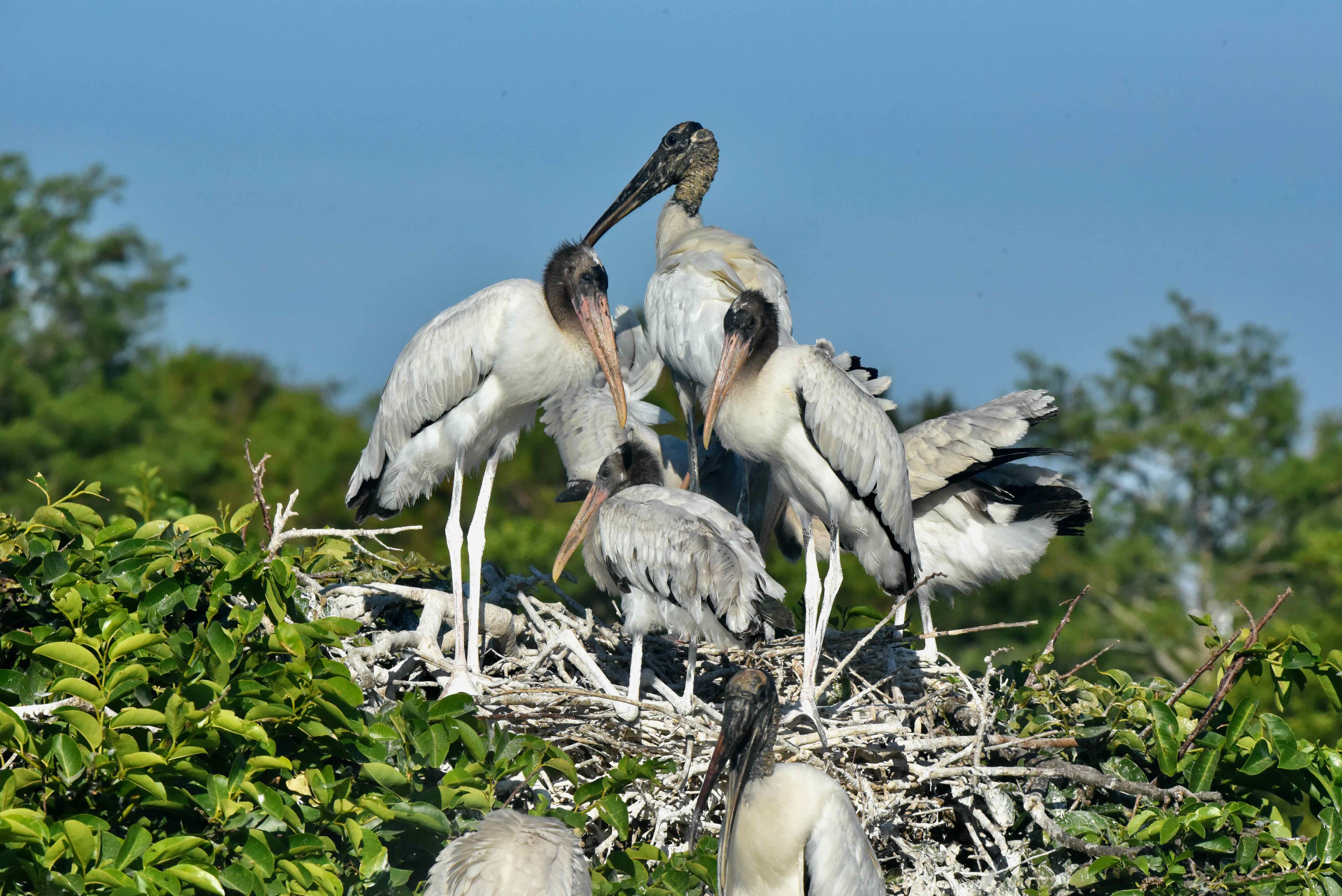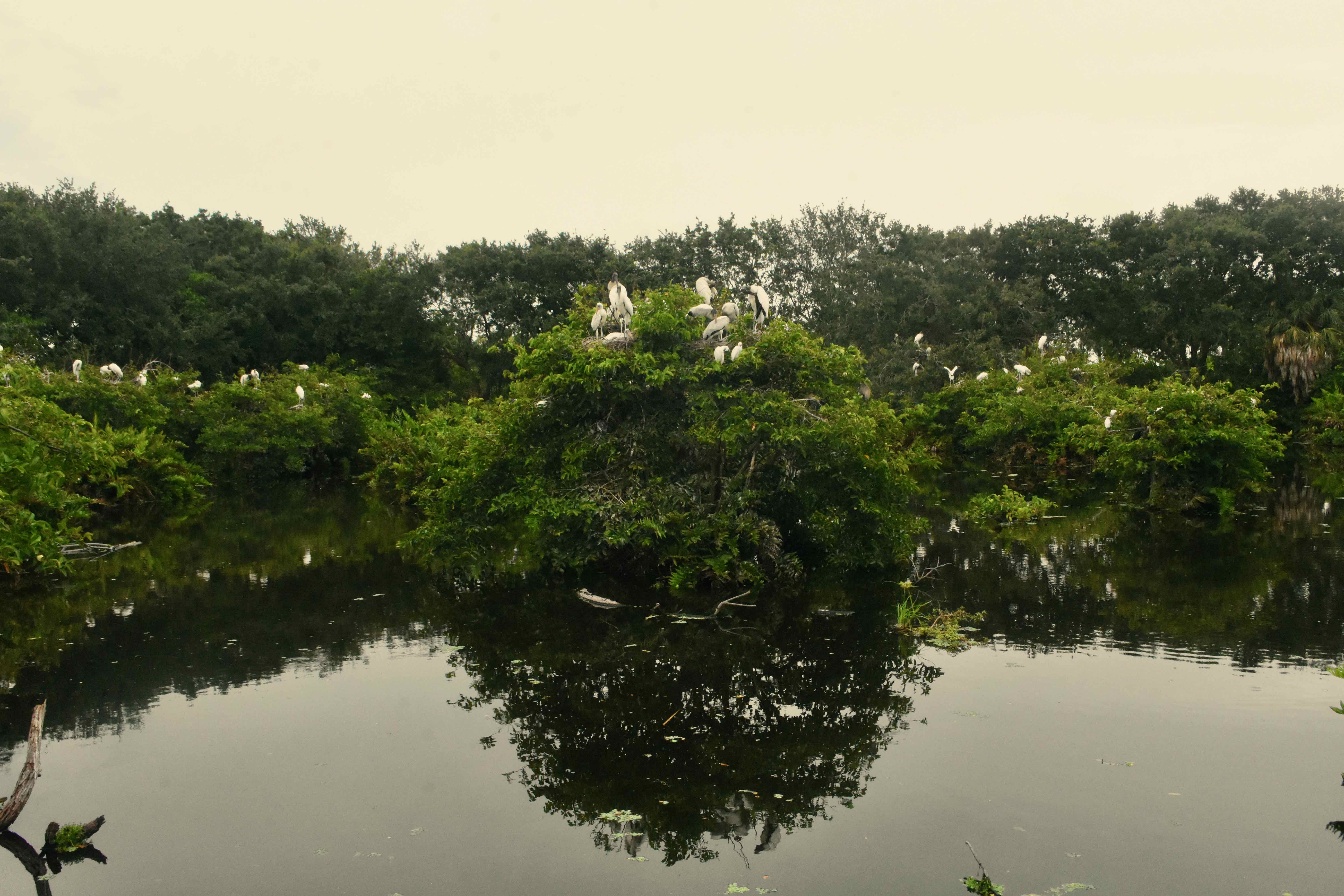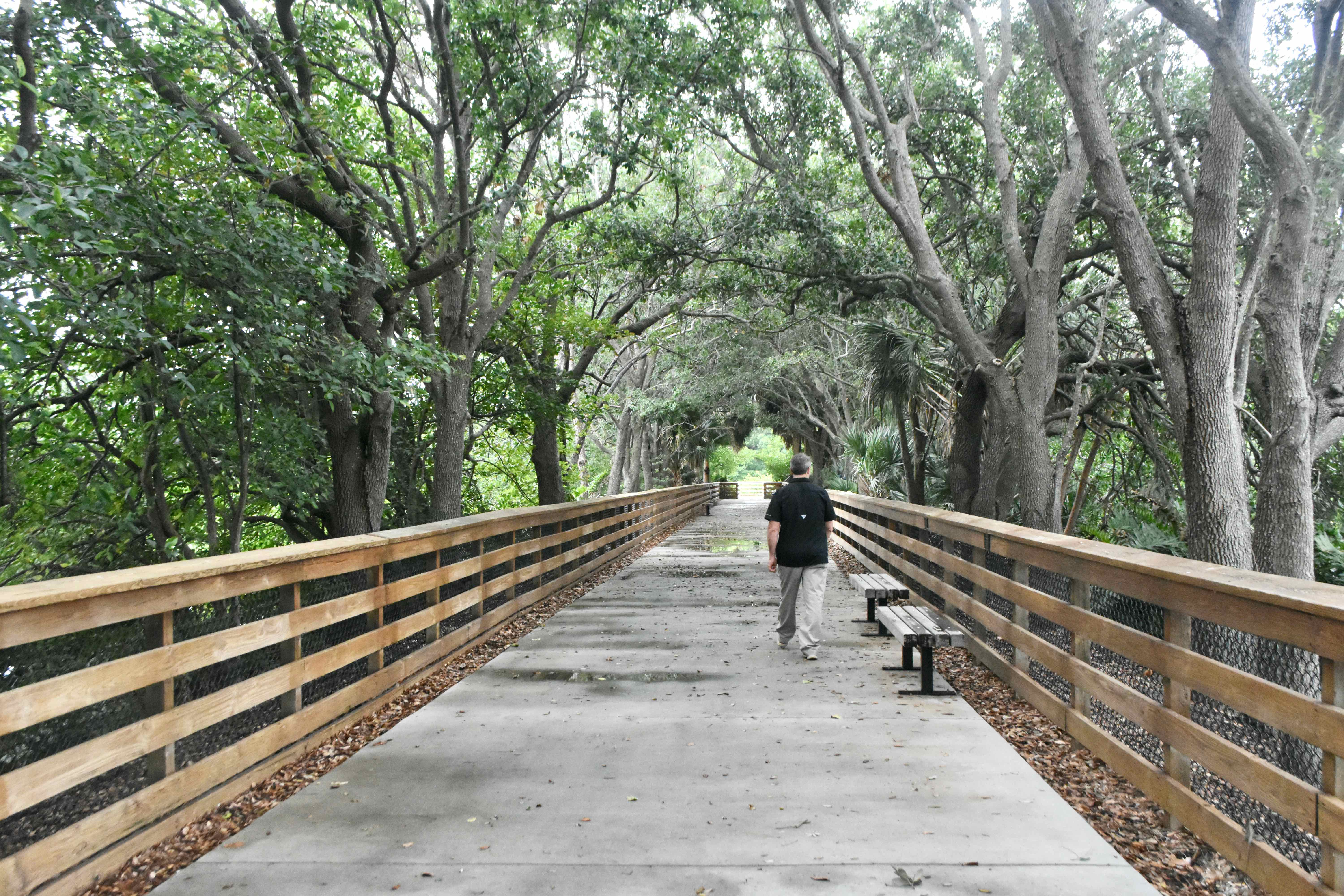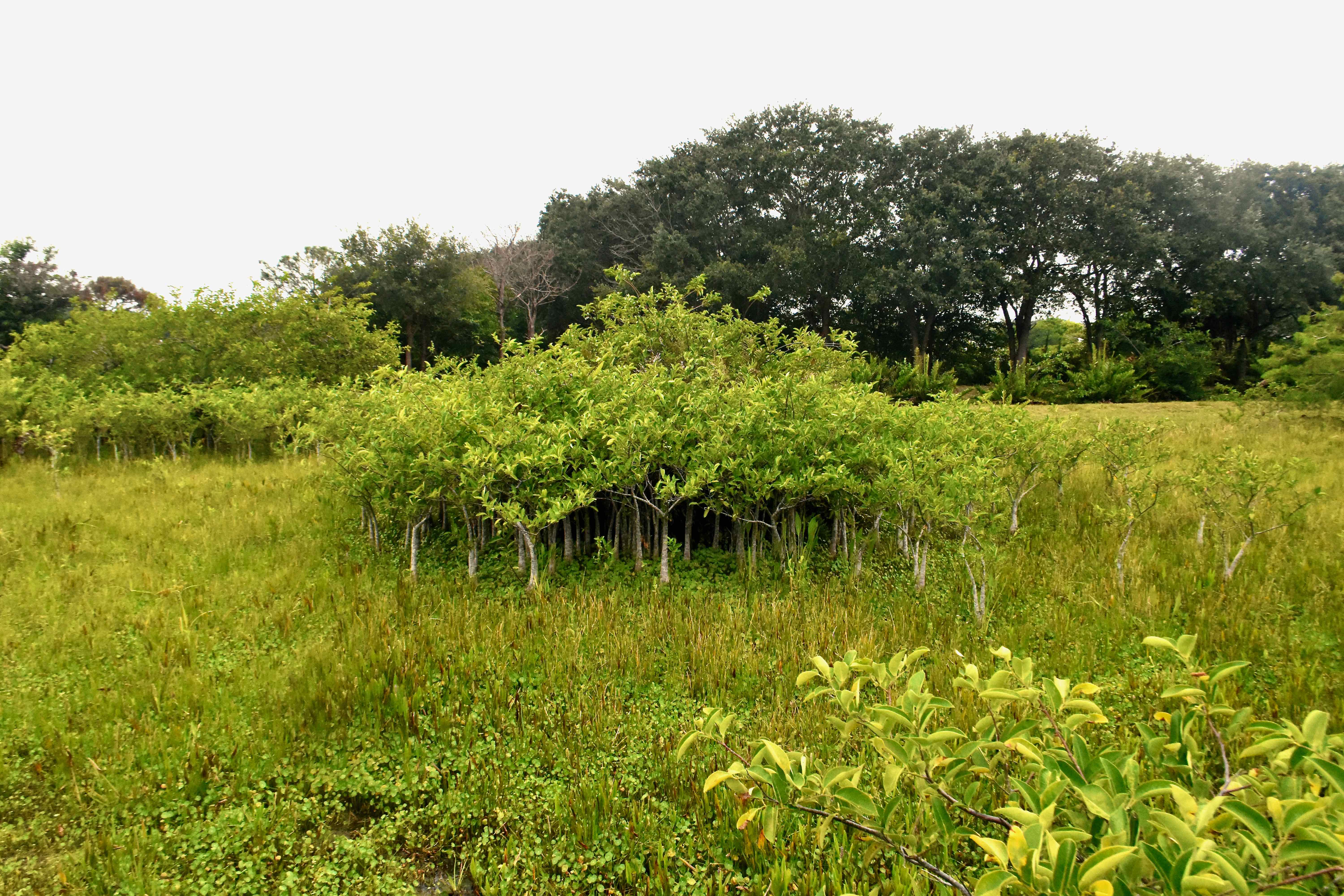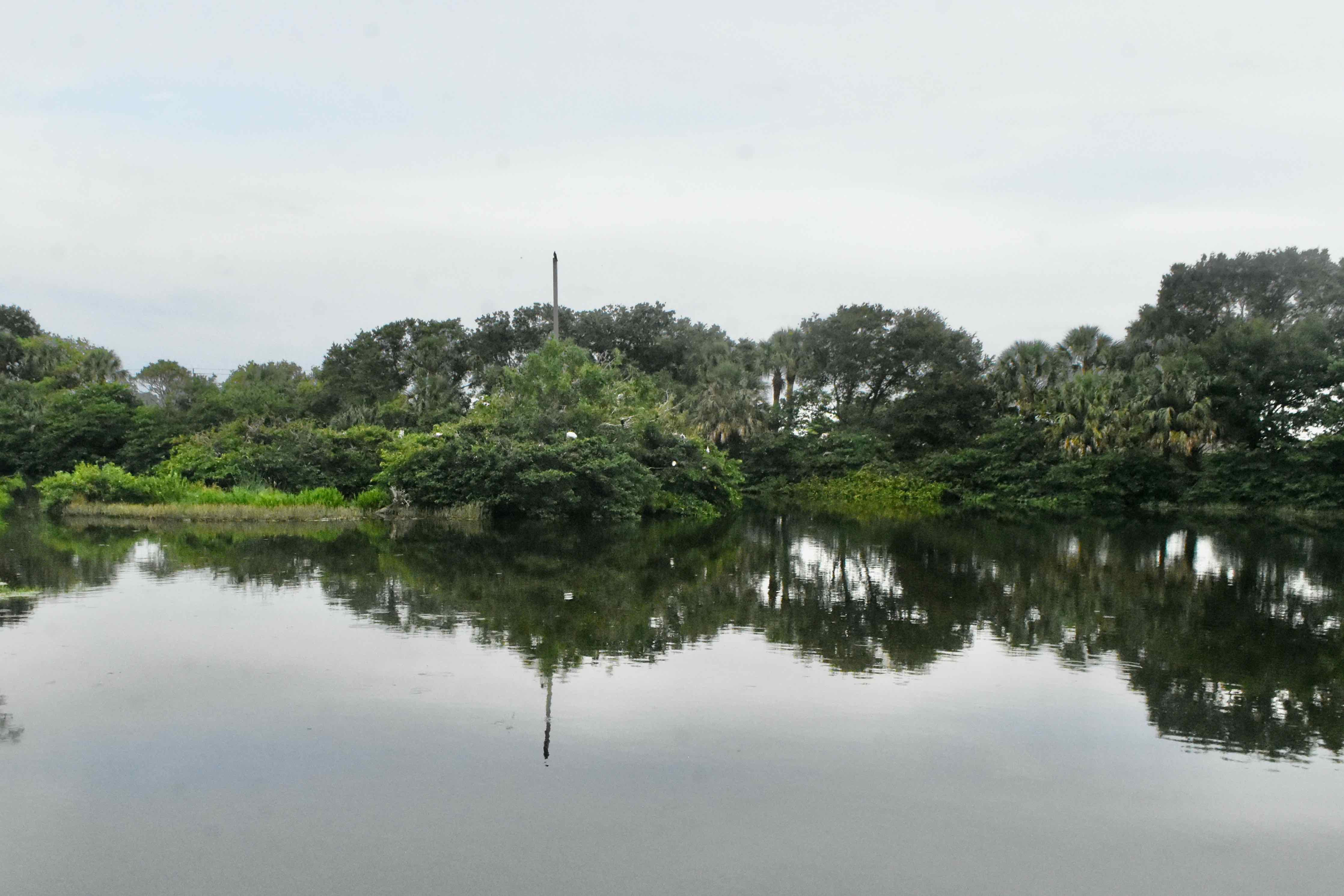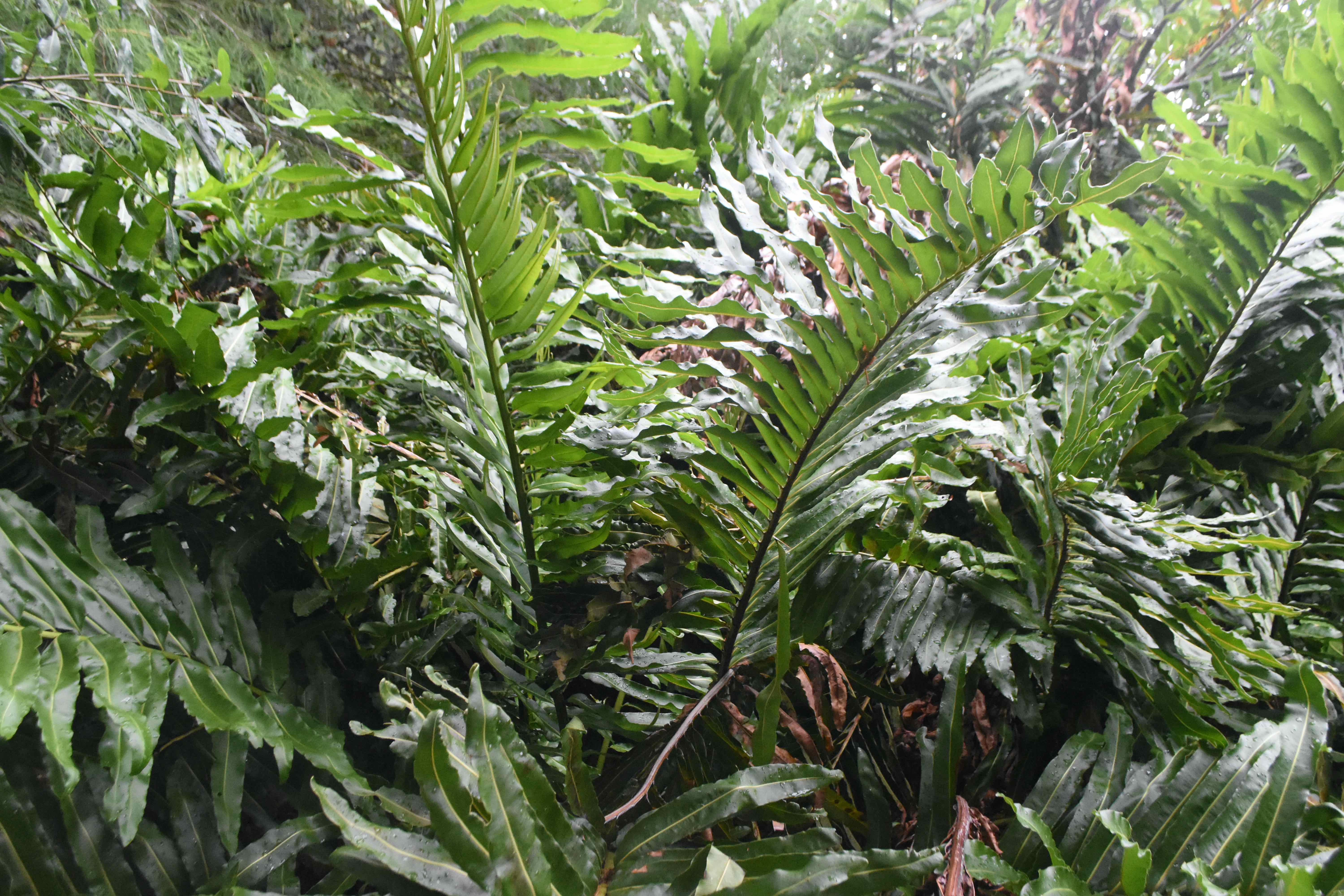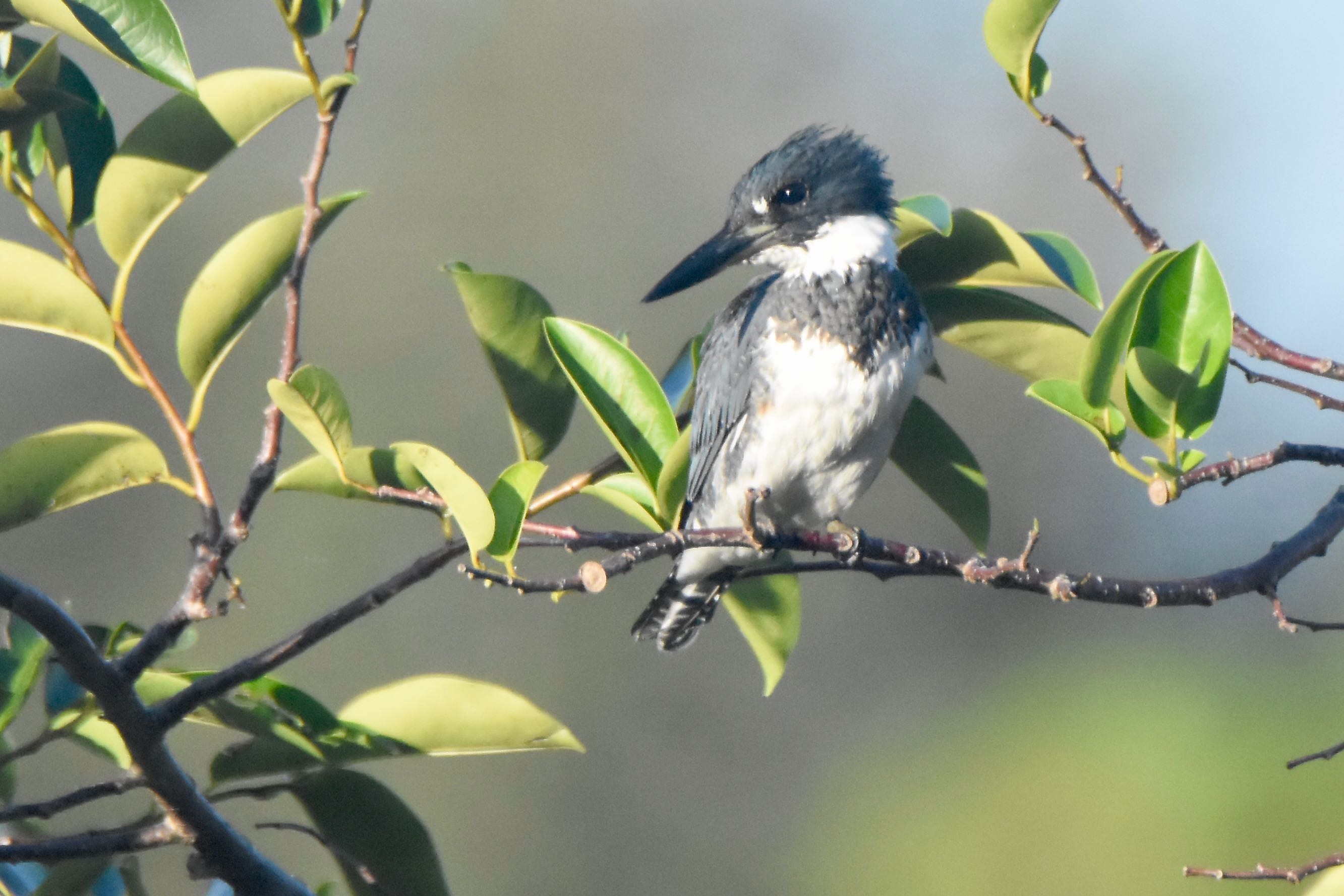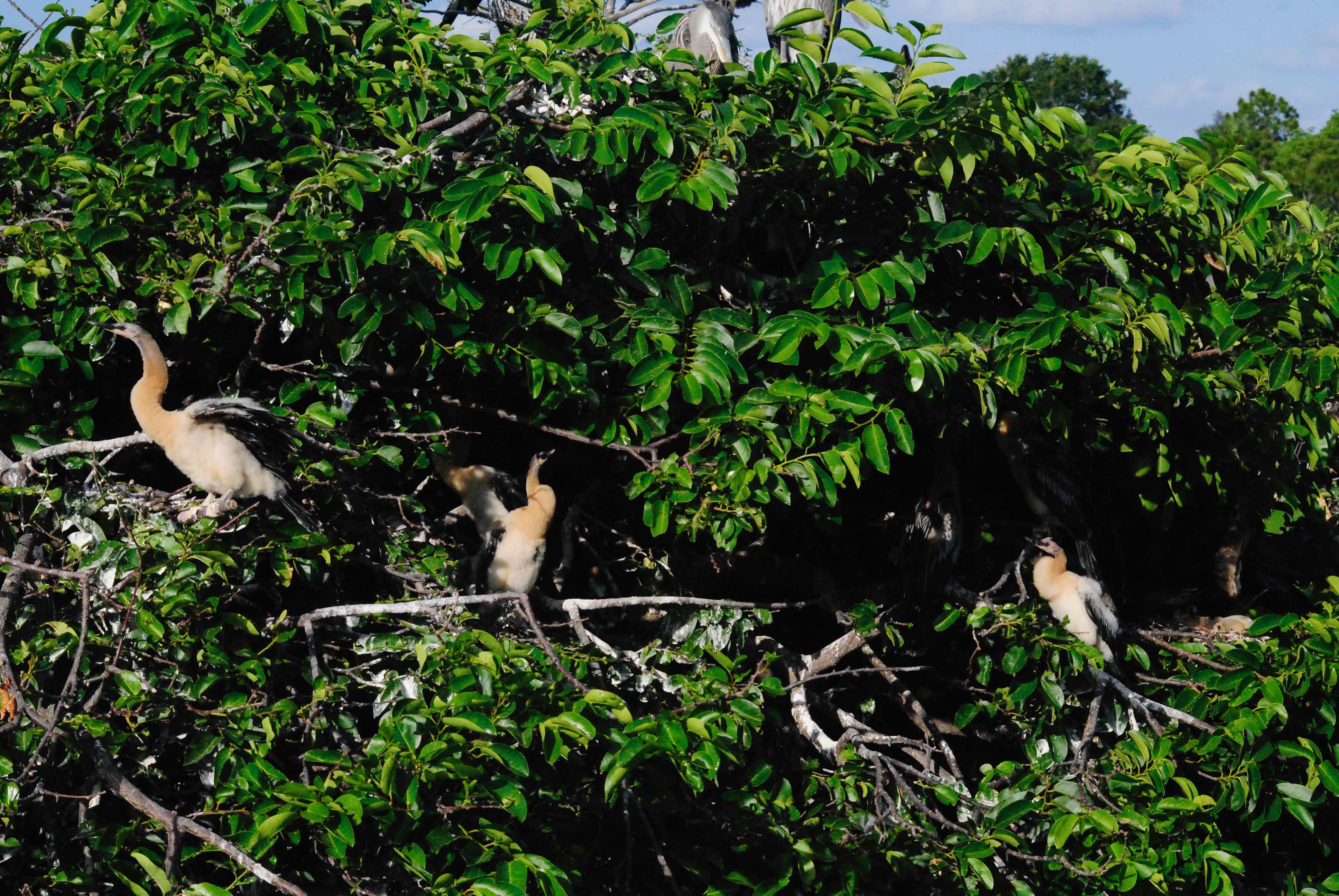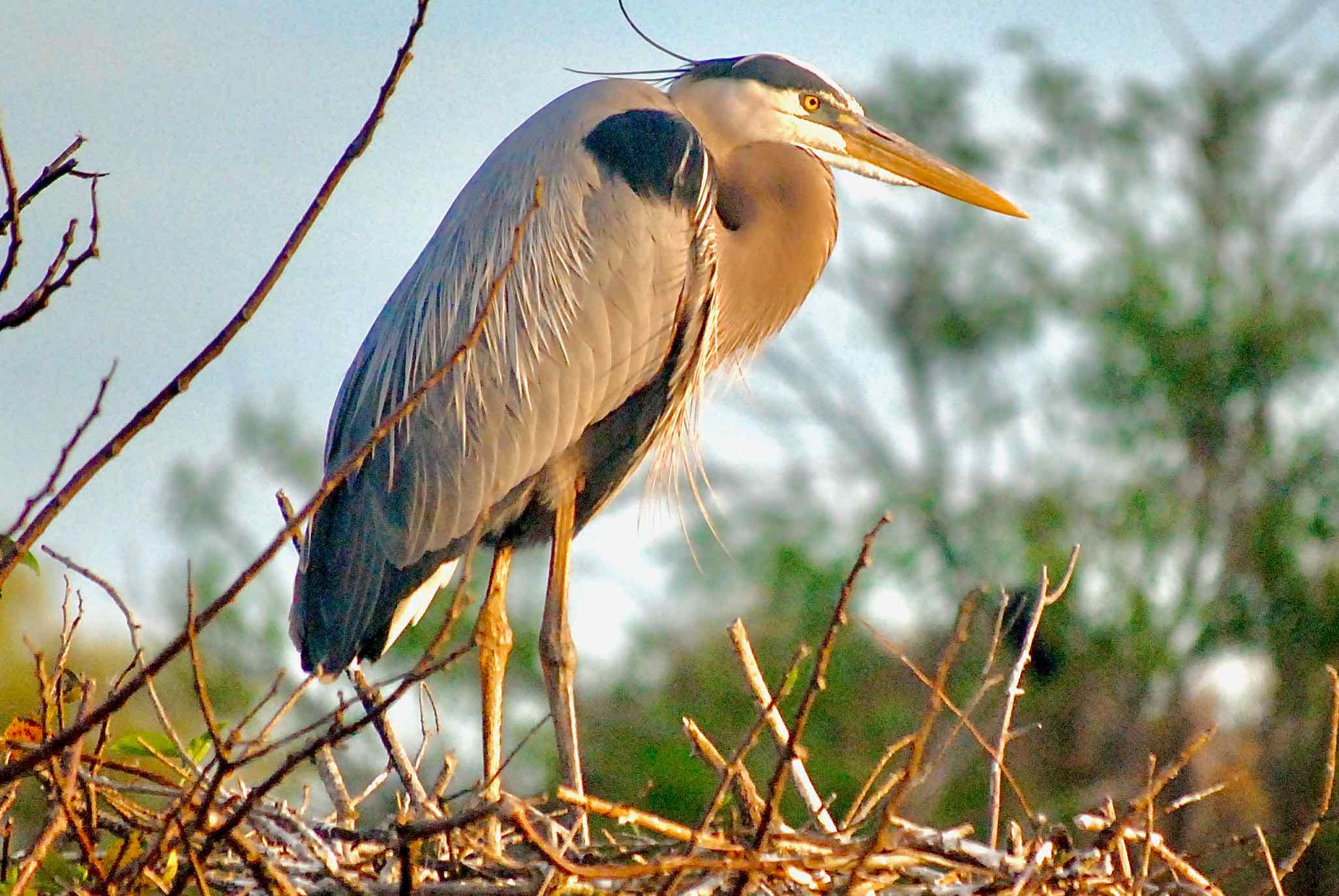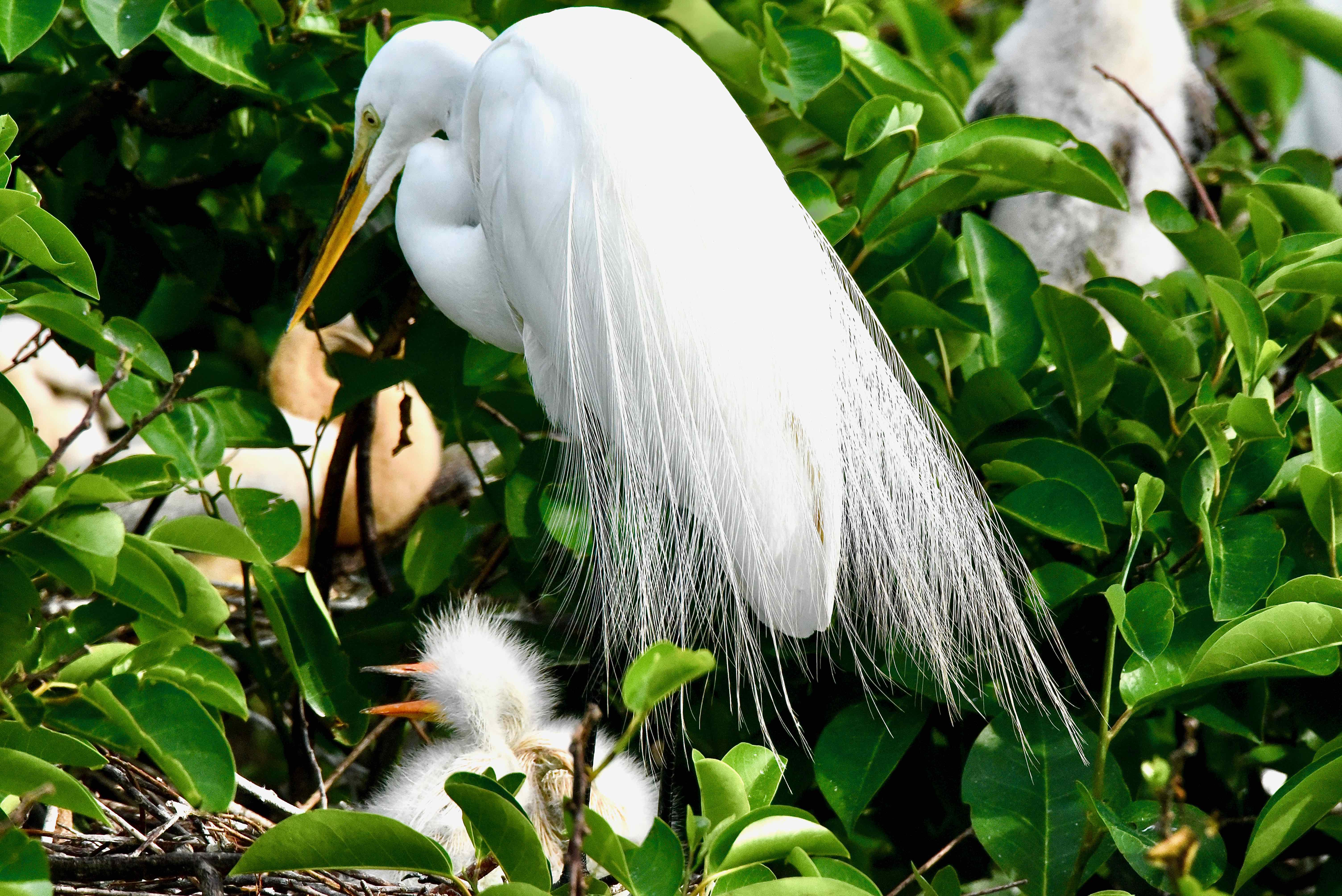Overview: There is nothing like Wakodatchee Wetlands anywhere in South Florida, maybe anywhere in all of Florida. Visit in March, April and May and you'll see an explosion of nesting birds and their offspring. Everywhere you walk, everywhere you look, there will be nests filled with squaking chicks of at least a half-dozen species, in some cases only feet from the boardwalk that takes visitors through the wetlands. In particular, Wakodahatchee Wetlands has become an important rookery for wood storks, which are listed as threatened under the Endangered Species Act.
The name Wakodahatchee means created wetlands in the Seminole language. The Palm Beach County water utilities department conceived Wakodahatchee as a means of educating the public on the importance of wetlands and the interdependence of us humans and our environment. The boardwalk is three-quarters of a mile long, winding through four created habitats: forested wetlands, shallows with emergant plants, marsh and open water, each catering to the needs of different species. The action slows down in the summer months but Wakodahatchee still has offerings that make a trip worthwhile.
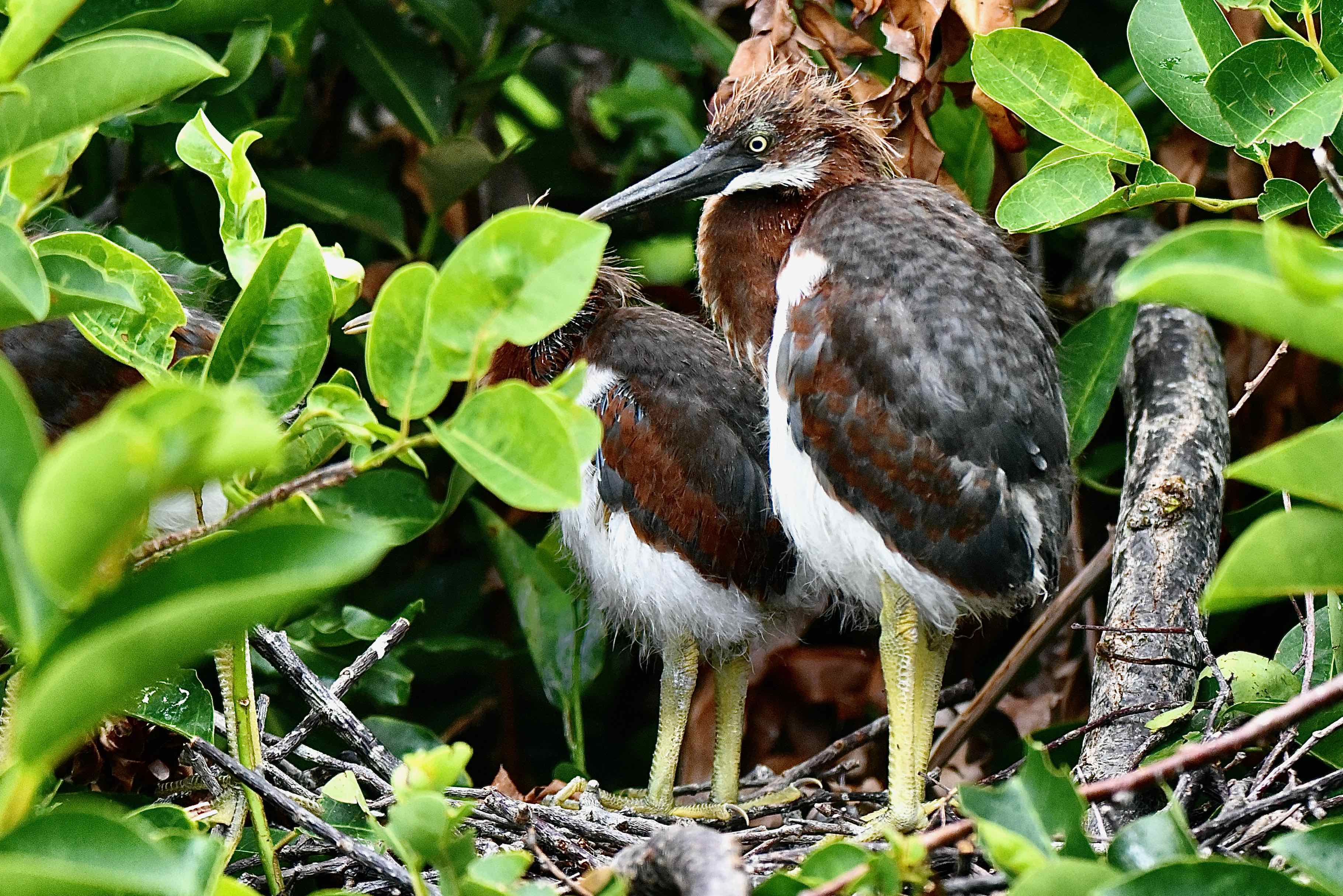
History: Wakodatchee is Palm Beach County's oldest created wetlands, opening to the public in 1996. It sits where two percolation ponds used to be, and in reality still are but with a heavy-duty green makeover and an additional function: public education. Two million gallons of Highly treated water pours into Wakodahatchee each day to keep the wetlands wet throughout the year. Eventually the water filters through the ground and back into the aquifer beneath just as it did before. Visitors hopefully gain an appreciation for the swamps, marshes and wet prairies that help supply us with clean water upon which we rely for life itself.
What You'll See: Birds, birds, birds and more birds. As many as 178 species of birds have been recorded on the 56-acre preserve, but in the spring, wood storks by the hundreds dominate Wakodahchee Wetlands, seemingly nesting everywhere. Also common nesters: great blue herons, anhingas and cormorants, tricolored herons, great egrets, snowy egrets, cattle egrets and white ibis. Ground nesters include moorhens, purple gallinules and black-necked stilts.
At times, Wakodahatchee can seem as quiet as a back street alley, the breeding birds and their offspring gone. But there are always birds going about their business in the waters and in the tree islands. Alligators, some impressively large, patrol the waters year-round. Look for their nests and hatchlings in the warmer months. Warblers fill the live oaks and cypress during the cooler months. In the marshes and the shallows, look for water snakes. River otters and bob cats are known to visit on rare occasions.
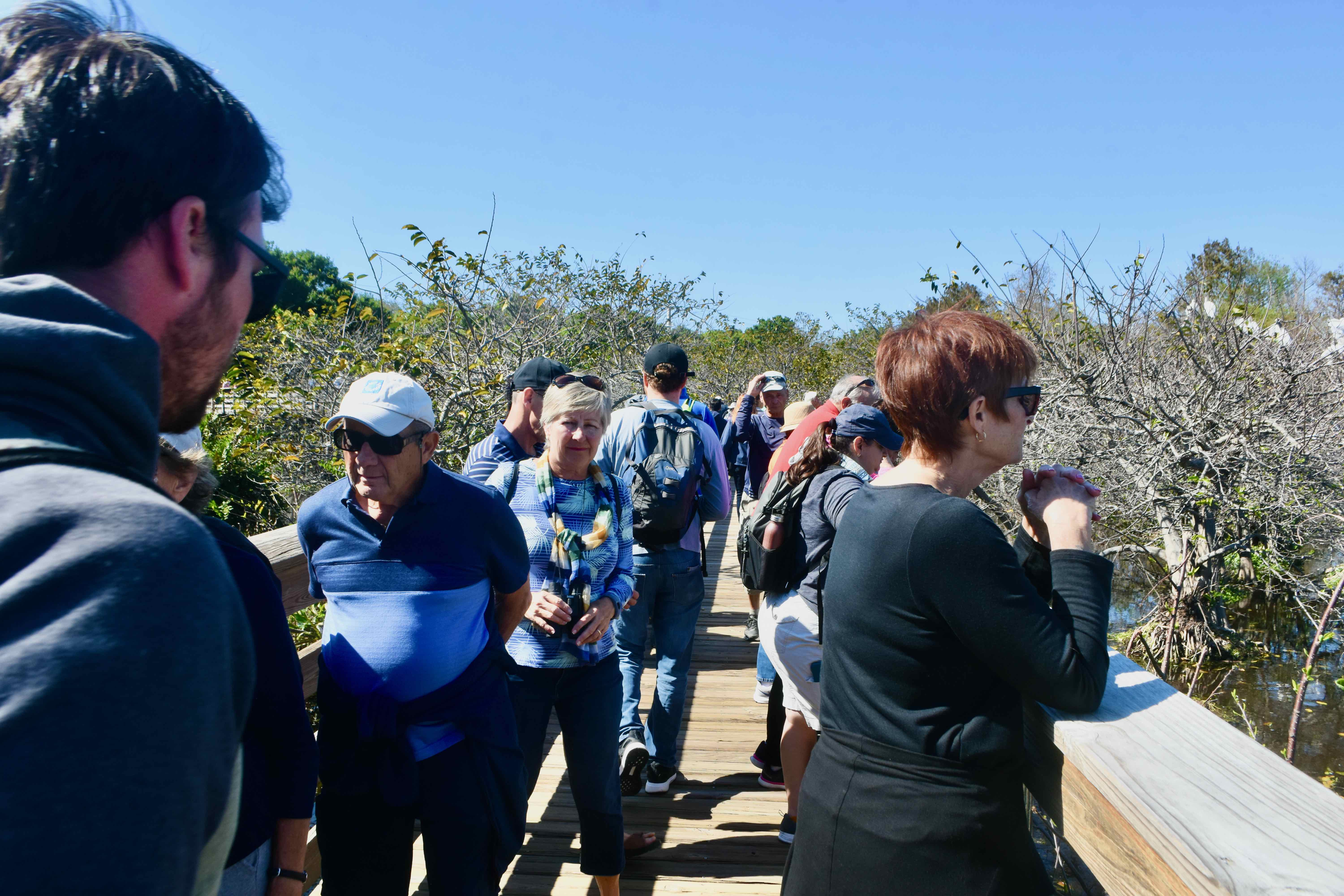
Amenities: The main attraction is the 0.75-mile boardwalk, with interpretive signs and covered sitting/observation platforms. Drinking water and restrooms are available in the water utilities building near the parking lot..
Nearby: Green Cay Nature Center, another created wetland, is about a five-minute drive to west of Wakodahatchee. Farther west are West Delray Regional Park and Loxahatchee National Wildlife Refuge. Lake Ida Park is 10 minutes to the east.
Links: The Great Florida Birding Trail's page on Wakodahatchee.
Of Note: Admission is free; hours vary by season. Parking is adequate for most of the year, but it can be a different story at peak season in March and April.
Cover Photo: What else but nesting wood storks. Wood storks are a threatened species mainly due to changes in the natural flow of water we humans have made upon the land. Wakodahatchee has become a major rookery for the species as it rebounds. Other photos: tricolored heron juveniles, also a threatened species, and the boardwalk on a busy March afternoon.
The name Wakodahatchee means created wetlands in the Seminole language. The Palm Beach County water utilities department conceived Wakodahatchee as a means of educating the public on the importance of wetlands and the interdependence of us humans and our environment. The boardwalk is three-quarters of a mile long, winding through four created habitats: forested wetlands, shallows with emergant plants, marsh and open water, each catering to the needs of different species. The action slows down in the summer months but Wakodahatchee still has offerings that make a trip worthwhile.

History: Wakodatchee is Palm Beach County's oldest created wetlands, opening to the public in 1996. It sits where two percolation ponds used to be, and in reality still are but with a heavy-duty green makeover and an additional function: public education. Two million gallons of Highly treated water pours into Wakodahatchee each day to keep the wetlands wet throughout the year. Eventually the water filters through the ground and back into the aquifer beneath just as it did before. Visitors hopefully gain an appreciation for the swamps, marshes and wet prairies that help supply us with clean water upon which we rely for life itself.
What You'll See: Birds, birds, birds and more birds. As many as 178 species of birds have been recorded on the 56-acre preserve, but in the spring, wood storks by the hundreds dominate Wakodahchee Wetlands, seemingly nesting everywhere. Also common nesters: great blue herons, anhingas and cormorants, tricolored herons, great egrets, snowy egrets, cattle egrets and white ibis. Ground nesters include moorhens, purple gallinules and black-necked stilts.
At times, Wakodahatchee can seem as quiet as a back street alley, the breeding birds and their offspring gone. But there are always birds going about their business in the waters and in the tree islands. Alligators, some impressively large, patrol the waters year-round. Look for their nests and hatchlings in the warmer months. Warblers fill the live oaks and cypress during the cooler months. In the marshes and the shallows, look for water snakes. River otters and bob cats are known to visit on rare occasions.

Amenities: The main attraction is the 0.75-mile boardwalk, with interpretive signs and covered sitting/observation platforms. Drinking water and restrooms are available in the water utilities building near the parking lot..
Nearby: Green Cay Nature Center, another created wetland, is about a five-minute drive to west of Wakodahatchee. Farther west are West Delray Regional Park and Loxahatchee National Wildlife Refuge. Lake Ida Park is 10 minutes to the east.
Links: The Great Florida Birding Trail's page on Wakodahatchee.
Of Note: Admission is free; hours vary by season. Parking is adequate for most of the year, but it can be a different story at peak season in March and April.
Cover Photo: What else but nesting wood storks. Wood storks are a threatened species mainly due to changes in the natural flow of water we humans have made upon the land. Wakodahatchee has become a major rookery for the species as it rebounds. Other photos: tricolored heron juveniles, also a threatened species, and the boardwalk on a busy March afternoon.

